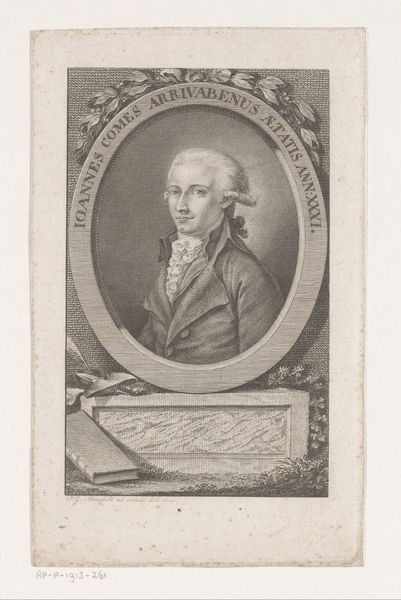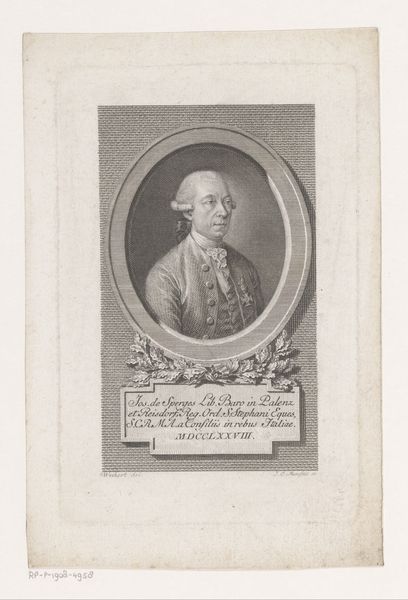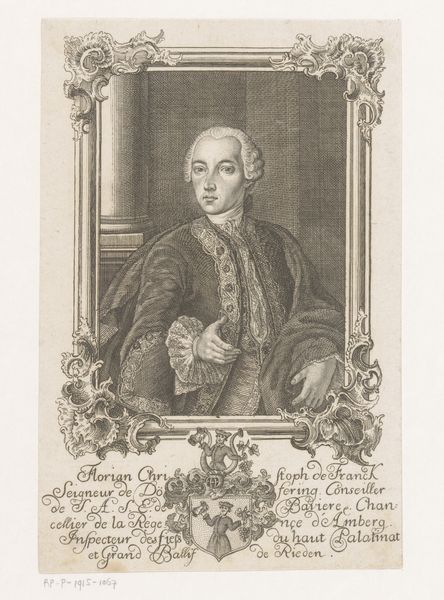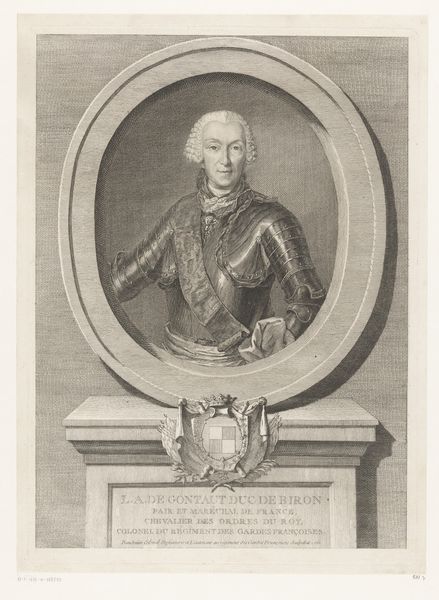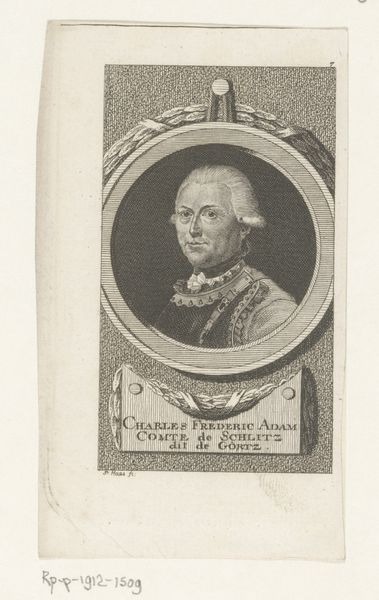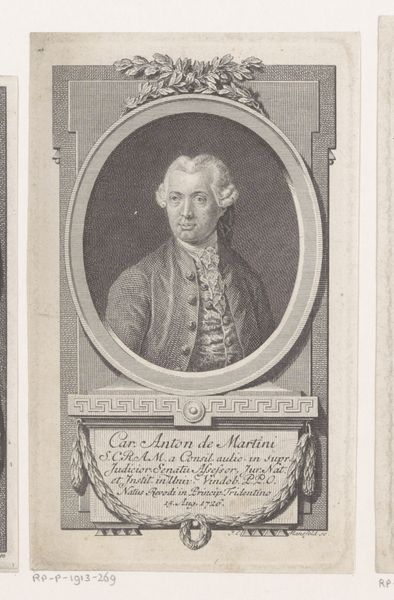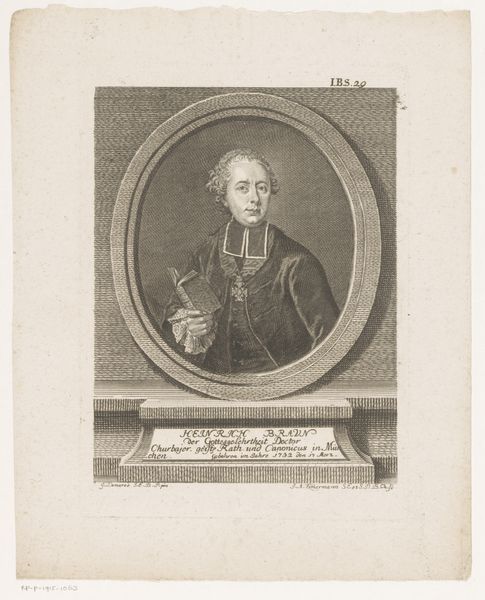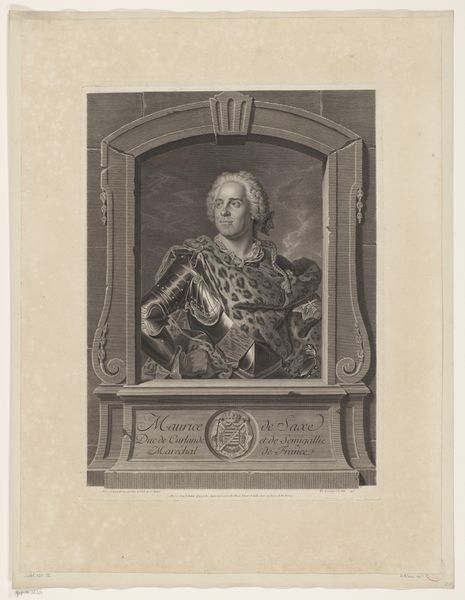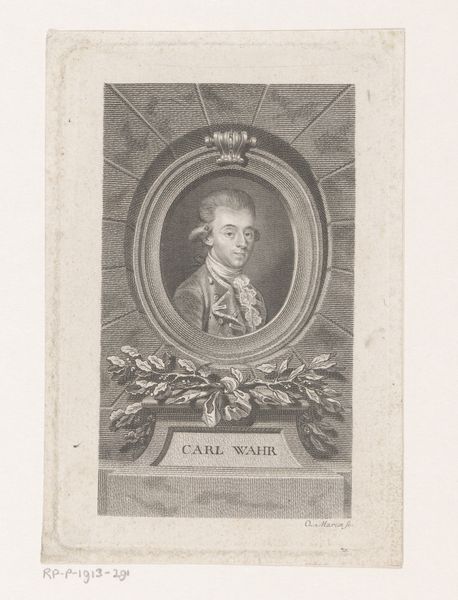
engraving
#
portrait
#
neoclacissism
#
old engraving style
#
historical photography
#
history-painting
#
engraving
Dimensions: height 162 mm, width 107 mm
Copyright: Rijks Museum: Open Domain
Curator: Here we have an engraving, "Portret van Luis Fermín de Carvajal," dating somewhere between 1787 and 1808, created by Agustin Sellent. What are your initial impressions? Editor: Striking how formal it is. That stark, almost clinical precision gives the subject a weight, a seriousness of purpose that's difficult to ignore. And, as an engraving, the reproductive capabilities speak to broader circulation and accessibility beyond traditional painting. Curator: Absolutely. And those formal choices reflect the Neoclassical style quite deliberately. The framing, the clear lines...everything about the execution feels incredibly deliberate and controlled, emphasizing reason and order. I'm interested in the symbolism here. What cultural significance might these visual elements hold? The laurel wreath, for instance? Editor: Well, the laurel often represents victory and triumph. But the prominent star worn on the Conde's chest, alongside that sash, signals noble status. He is quite literally, emblazoned with symbols of power and accomplishment. Curator: And isn’t it compelling how the very act of creating multiple engravings, making his likeness more accessible, subtly shifts the understanding of nobility itself? Instead of singular paintings owned by elites, this work engages with concepts of wider access, aligning with social currents questioning inherited privilege. Editor: A fascinating tension, isn't it? This accessibility contrasts starkly with the rarefied world he inhabits, the symbols of which, are prominently on display here. He’s contained, almost trapped by the Neoclassical lines, yet his image escapes those boundaries through its mechanical reproduction and dispersal. Curator: It speaks to the ways even seemingly rigid artistic styles can hint at underlying societal transformations. Editor: Precisely! This portrait encapsulates an era grappling with tradition and the burgeoning forces of change, as seen through its iconography and mass production capabilities. Curator: I am now curious how people from other countries can use the likeness and imagery in the piece for their understanding. Thank you for those reflections.
Comments
No comments
Be the first to comment and join the conversation on the ultimate creative platform.

